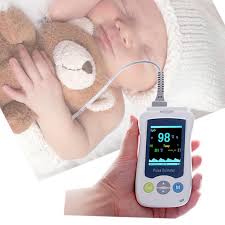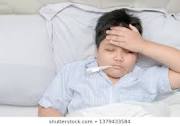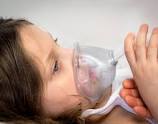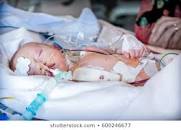It has been observed that ,children usually suffer from mild to moderate disease due to SARS CoV 2 infection causing COVID 19,in comparision to adults
Mortality due to COVID 19 in children is less in comparision to adults
Children suffering from COVID 19 require less hospitalisation in comparision to adults
The reason for less severity of this disease in children is not clear
In an observational study done in Delhi,India,researchers included 210 children who were immunised for common childhood diseases and were suffering from SARS CoV2 infection as confirmed by Rapid antigen test and RT-PCR test ,considering the incidence of COVID 19 as 2% in children.Data were collected from Distric Immunisation Officer central district New Delhi regarding immunisation and from CDMO Central district New Delhi regarding various stages of severity of disease in children.Children who received 3 doses of Pentavac containing DPT,HiB,HepB,1 dose of BCG,3 doses of Rotavirus ,3 doses of oral polio,2 doses of fractional injectable polio and 1 dose of MR till the age of 1 year were considered compltely immunised.
It has been observed that ,children who received MR/MMR before 1 year of age had less severity of COVID-19 in comparision to children who did not receive MR/MMR.The similar result was not found in mice study.The reason for less severity of COVID 19 in children immunised for MMR is the component of vaccine virus cross react with SARS CoV2 virus.So antibody against Measles and or Rubella produced after immunisation is also protective against COVID-19.BCG vaccinated children also showed less severity of COVID19 in comparision to non BCG Vaccinated children
Other explanation of less severity of COVID 19 in children is that the children have low immunity so do not react strongly to SARS CoV2 virus
It has been concluded that MMR Vaccination provide neutralising antibody against COVID19 causing SARS CoV2
REFERENCES;
1. Salman S, Salem ML. Routine childhood immunization may
protect against COVID-19. Med Hypoth. 2020;140:
109689.
2. Sidiq KR, Sabir DK, Ali SM, et al. Does early childhood
vaccination protect against COVID-19? Front Mol Biosci.
2020;7:1-6.
3. Gomber S, Arora S, Das S, et al. Immune response to second
dose of MMR vaccine in Indian children. Indian J Med Res.
2011;134:302-6.
Indian Pediatrics,Feb 2022
Tag: COVID 19
Molnupiravir,approved for COVID treatment,may be a wonder drug,Dr.Dev,M.D.,Pediatrician and Pediatric Pulmonologist,Mohan Nagar,Ghaziabad,Delhi NCR
UK has become the first country in the world to approve MOLNUPIRAVIR for the treatment of Corona Virus Disease
It is an antiviral drug
It has been approved to treat mild to moderate disease with at least one risk factor for severity like obesity,Diabetes Mellitus,Heart disease
It should be given as early as the disease get detected and within five days of onset of symptoms
It is given twice daily for five days
It acts by altering the genome of virus and rendering the virus ineffective ,at the same time causing no harm to host
In animal study,it has been found to be safe
It is administered orally
It may be a wonder drug with capacity to change the game as the management till now is focussed on vaccine prevention of the disease and currently available antiviral drug Remdesivir is not much effective
REFERENCES;AFP NOVEMBER 05,2021
How to differentiate Dengue fever from MIS-C,Dr.Dev,M.D.,Pediatrician and Pediatric Pulmonologist ,Mohan Nagar,Ghaziabad,Delhi NCR
Severe Dengue fever and Multisystem inflammatory syndrome in children(MIS-C) both are the states of cytokine storm
Both these conditions present almost similarly,clinically
In the period of September-October 2021 both disease conditions are being seen frequently in India
Severe Dengue fever is caused by Dengue virus ,transmitted into human through Aedes mosquito bites
MIS-C is a post COVID 19 state
It is very important to differentiate between these two conditions for the treatment purposes as the treatment of these two are entirely different
In cases of severe Dengue fever the mainstay of treatment is aggressive fluid therapy with crystalloid ,colloid and when needed ionotrops and platelet transfusion if severe thrombocytopenia.
In contrast,aggressive fluid therapy may be life threatening in MIS-C,in which there may be left ventricular dysfunction.In this condition, the mainstay of treatment is intravenous steroid with or without IVIG.Other medications required are low molecular heparin and aspirin.
If there is fever with prominent vomiting,myalgia,erthmatous rashes,profound weakness and on investigations there is leucopenia,severe thrombocytopenia,hemoconcentration and raised serum Ferritin,it is indicative of severe Dengue fever. Positive NS1 antigen and or IgM antibody for Dengue virus confirms the diagnosis
If there is conjuntival injections,swelling of hands and feet,altered sensorium and diarrhoea along with fever, and on investigations leucocytosis,fibrogienemia,raised serum D-Dimer,raised serum IL6 ,it is leading towards the diagnosis of MIS-C. Positive RT-PCR or antibody againt COVID 19 confirms the diagnosis.
REFERENCES:1.Indian Pediatrics:volume 58;15 october 2021
2. Ahmed M, Advani S, Moreira , et al. Multisystem
inflammatory syndrome in children: A systematic review. E
Clin Med. 2020;26:100527.
3. Mishra S, Ramanathan R, Agarwalla SK. Clinical profile of
dengue fever in children: A study from southern Odisha,
India. Scientifica (Cairo). 2016;2016:6391594.
UPCOMING WAVE OF COVID-19 and Children,Dr.Dev,M.D.,Pediatric Pulmonologist,Ghaziabad,Delhi NCR
The coronavirus disease and or infection has affected all age group of individuals all over the world.
The herd immunity ,means immunity of entire population of an area to fight any disease develops naturally when almost 70% population of that area is infected .
The other way to develop immunity against the disease is,vaccination of the entire population.
It has been in discussion in India for last couple of weeks that,the upcoming wave of COVID-19 will affect only children and there will be large number of deaths among children.
It has been observed till now all over the world that children have been affected lees and mortality has been less as compared to adults.
But fear among parents and among doctors is genuine.
There are two reasons for that.
1. Since the adult population has been widely covered by vaccination,they will either have no disease or less severe disease.Children are left unvaccinated till now ,so the infection will cause various degrees of diseases in children.
2.Although the mortality percentage is less in children as compared to adults,a large population of diseased children will put burden on health care system and as the number of diseased children will be more,there will be less medical care and high mortality
REFERENCES:Interview given by Dr. Bhramar Mukharjee,Professor and chair of biostatistics,Michigan school of Public health,published in TOI,Delhi edition,Friday,25.06.2021
CAUSES OF HAPPY HYPOXIA IN COVID 19,Dr.Dev,M.D.,Pediatrician and Pediatric Pulmonologist,Sahibabad,Ghaziabad,Delhi NCR
 Many patients suffering from COVID 19 are hypoxemic but not in distress and breathing comfortably in room air.This stage is called happy hypoxia.Hpoxemia is detected only after high index of suspician leads to SpO2 monitoring.
Many patients suffering from COVID 19 are hypoxemic but not in distress and breathing comfortably in room air.This stage is called happy hypoxia.Hpoxemia is detected only after high index of suspician leads to SpO2 monitoring.
Whenever there is less ventilation into the lung,there occurs a vasoconstriction in the pulmonary vessels as a compensatory response in poorly ventilated area of the lung..This is called hypoxemic Pulmonary vasocontrictor response(HPV).It has been seen that in COVID19 ,this HPV response is diminished with formation of intrapulmonary shunt(right to left) as demontrated by dual energy CT scan. This vasoplegic response is triggered by vasodilator prostaglandin,bradykinin and cytokines.
SARS Cov 2 virus,responsible for COVID 19, damages the endothelium of lung which express angiotensin converting enzyme II receptors, leading to formation of microthrombi in lung capillaries.There is extensive thrombi formation in arteries and capillaries leading to blockage of capillaries and arteries causing ventilation/perfusion mismatch and hypoxemia.This stage is called AVDS(acute vascular distress syndrome)
SARS Cov2 virus damages type 2 pneumocytes and in effect, basement membrane is denued which becomes covered by hyaline membrane consisting of fibrin and dead cells which impaires gas exchange.As the diffusion barrier becomes more pronounced,blood flow through pulmonary vessels increase during exertion.So there is less time for gas exchange during exertion causing hypoxemia.
In normal situations whenever there is less oxygen in the blood,it is sensed by carotid bodies which is situated at the bifurcation of commonl carotid artery..It gives signal to the respiratory centre situated in medulla oblongata which in turn sends signal to diaphragm via phrenic nerve to increase ventilation which is perceived as duspnea by patients.When the PaO2 is between 90 mmHg to 60 mmHg,there is no such response but as soon as the PaO2 drops below 60 mmHg ,immediately there is a signal exponentially, to increase the ventilation.But for this ventilatory response to occur, when the level of PaO2 is between 40mmHg to 60 mmHg,PaCo2 level must increase to above 39 mmHg to stimulate the carotid bodies.
SARS COV2 VIRUS BLOCKS the sensitivity of angiotensin converting enzyme 2 receptor present in carotid body .Therefore it can not sense hypoxia or hypercarbia unless it becomes critical.So,there is no signal to increase the ventilation and patients remain comfortable till the hypoxia becomes critical.This stage is called happy hypoxia.
In the early stage of the disease,lung parenchyma is minimally involved which is evident by ground glass opacity in the peripheral regions of lung.In this stage ,vital capacity is maintained ,there is high compliance and low elastance of lung called L-Phenotype.At this stage there is low ventilatory response as the hypoxia is vascular in origin due to impairement of HPV and there is no dyspnea.
As the disease progresses,there is extensive involvement of lung parenchyma with increased ventilatory response,increased permeability of pulmonary capillaries with accumulation of fluid in interstitium(interstitial edema)and inspiratory pressure becomes more negative.This stage is called H-Phenotype with high elastance and low compliance.The transition from L-phenotype to H-Phenotype is precipitaed by more negative inspiratory pressure created by forceful inspiratory effort by patient during spontaneous breathing,called patient self inflected lung injury(P-SILI)
In case of fever, the oxygen dissociation curve is shifted towards right side, causing low SaO2 for a given PaO2, making the sensing of SpO2 by pulse oxymetry inaccurate as ,at low PaO2 level, SpO2 can underread by about 7 % if SaO2 is below 80%
In case of Diabetes and age more than 65 years the sensitivity of carotid body becomes less causing less ventilatory response.
IN NUTSHELL, at the initial stage of disease,there is minimal involvement of lung parenchyma,primarily the disease affects pulmonary vessels with less HPV response,AVDS,with development of rifht to left intrapulmonary shunt causing hypoxia,the virus decreases the sensitivity of carotid body to sense hypoxia and increase ventilatory response,shifting of oxygen dissociation curve to right causing low SaO2 for a given PaO2 due to high fever, all leading to less ventilatory response and patients remains comfortable till the critical stage.
REFERENCES:
1. Guan W, Ni Z, Hu Y, et al. Clinical Characteristics of Coronavirus Disease 2019 in China. N Engl J Med. 2020;382(18):1708-1720. doi:10.1056/NEJMoa2002032
2. Mahjoub Y, Rodenstein DO, Jounieaux V. Severe Covid-19 disease: rather AVDS than ARDS? Crit Care. 2020;24(1):327. doi:10.1186/s13054-020-02972-w
3. Lang M, Som A, Mendoza DP, et al. Hypoxaemia related to COVID-19: vascular and perfusion abnormalities on dual-energy CT. Lancet Infect Dis. Published online April 30, 2020. doi:10.1016/S1473-3099(20)30367-4
4. Dhont S, Derom E, Van Braeckel E, Depuydt P, Lambrecht BN. The pathophysiology of ‘happy’ hypoxemia in COVID-19. Respir Res. 2020;21(1):198. doi:10.1186/s12931-020-01462-5
5. Ackermann M, Verleden SE, Kuehnel M, et al. Pulmonary Vascular Endothelialitis, Thrombosis, and Angiogenesis in Covid-19. N Engl J Med. 2020;383(2):120-128. doi:10.1056/NEJMoa2015432
6. Mahjoub Y, Rodenstein DO, Jounieaux V. Severe Covid-19 disease: rather AVDS than ARDS? Crit Care. 2020;24(1):327. doi:10.1186/s13054-020-02972-w
7. Mason RJ. Pathogenesis of COVID-19 from a cell biology perspective. Eur Respir J. 2020;55(4). doi:10.1183/13993003.00607-2020
8. Mo X, Jian W, Su Z, et al. Abnormal pulmonary function in COVID-19 patients at time of hospital discharge. Eur Respir J. 2020;55(6):2001217. doi:10.1183/13993003.01217-2020
9. Hopkins SR. Exercise Induced Arterial Hypoxemia: The role of Ventilation-Perfusion Inequality and Pulmonary Diffusion Limitation. In: Roach RC, Wagner PD, Hackett PH, eds. Hypoxia and Exercise. Advances in Experimental Medicine and Biology. Springer US; 2007:17-30. doi:10.1007/978-0-387-34817-9_3
10. Masi P, Bagate F, d’Humières T, et al. Is hypoxemia explained by intracardiac or intrapulmonary shunt in COVID-19-related acute respiratory distress syndrome? Ann Intensive Care. 2020;10(1):108. doi:10.1186/s13613-020-00726-z
11. Reynolds AS, Lee AG, Renz J, et al. Pulmonary Vascular Dilatation Detected by Automated Transcranial Doppler in COVID-19 Pneumonia. Am J Respir Crit Care Med. Published online August 6, 2020:rccm.202006-2219LE. doi:10.1164/rccm.202006-2219LE
12. Mohan R, Duffin J. The effect of hypoxia on the ventilatory response to carbon dioxide in man. Respir Physiol. 1997;108(2):101-115. doi:10.1016/S0034-5687(97)00024-8
13. Gattinoni L, Chiumello D, Caironi P, et al. COVID-19 pneumonia: different respiratory treatments for different phenotypes? Intensive Care Med. 2020;46(6):1099-1102. doi:10.1007/s00134-020-06033-2
14. Weisbrod CJ, Eastwood PR, O’Driscoll G, Green DJ. Abnormal ventilatory responses to hypoxia in Type 2 diabetes. Diabet Med J Br Diabet Assoc. 2005;22(5):563-568. doi:10.1111/j.1464-5491.2005.01458.x
15. Kronenberg RS, Drage CW. Attenuation of the ventilatory and heart rate responses to hypoxia and hypercapnia with aging in normal men. J Clin Invest. 1973;52(8):1812-1819. doi:10.1172/JCI107363
16. Tobin MJ, Laghi F, Jubran A. Why COVID-19 Silent Hypoxemia Is Baffling to Physicians. Am J Respir Crit Care Med. 2020;202(3):356-360. doi:10.1164/rccm.202006-2157CP
17. Kelman GR. Digital computer subroutine for the conversion of oxygen tension into saturation. J Appl Physiol. 1966;21(4):1375-1376. doi:10.1152/jappl.1966.21.4.1375
Ibuprofen is safe to use during COVID 19,Dr.Dev,M.D.,Pediatrician and Pediatric Pulmonologist,Sahibabad,Ghaziabad,Delhi-NCR
 There is no specific treatment available for COVID 19,all over the world.
There is no specific treatment available for COVID 19,all over the world.
In such case, the only treatment which can be useful is the symptomatic treatment.
The troublesome symptoms which need to be addressed are ,fever,headache and bodyache apart from cough
The most widely used drug to get relief from fever and pain is paracetamol and acetaminophen derivatives.
Some people do not feel comfortable even after taking Paracetamol and continue to feel headache ,bodyache,and fever.
These cohort of people get relief after taking Ibuprofen.
It was believed at the outset of epidemic of COVID 19,that the use of Ibuprofen may worsen the severity of COVID 19 and people refrained from using this drug.
Researchers from Israel studied the effects of Ibuprofen in patients of COVID 19.They studied 403 patients with the median age of 45 years.They observed the patients from 1 week prior to the diagnosis to,throughout the course of disease.
44% patients developed fever who required its treatment.32% patients used Acetaminophen and 22% used paracetamol to treat their fever.
Respiratory support was needed in 11% patients in Acetaminophen group and approximately10% in Ibuprofen group(P=1).
Mortality was noticed in 2.4% patients using Acetaminophen and 3.8% using Ibuprofen(P=0.95)
So,there was no difference observed between Acetaminophen group and Ibuprofen group as far as the need for respiratory support or mortality are concerned
Although there are many limitations of this study including recall bias and no study among asymptomatic patients,this is an important study which needs further study on larger population before making a general opinion.
REFERENCES;
Rinott E, Kozer E, Shapira Y, Bar-Haim A, Youngster I. Ibuprofen use and clinical outcomes in COVID-19 patients [published online June, 11 2020]. Clin Microbiol Infect. doi:10.1016/j.cmi.2020.06.003
Newborns born to COVID 19 positive mother are not at risk,Dr.Dev,M.D.,Pediatrician and Pediatric Pulmonologist,Sahibabad,Ghaziabad,Delhi-NCR
There is a common belief that infants born to COVID 19 positive mother may have COVID 19,and their immunological status is impaired.
71 Newborns were taken in study to know the facts about the disease status and immunological status.
After exclusion criteria,51 Newborns were included in the study.
All mothers were tested positive for COVID 19 during third trimester of pregnancy.
Chest X-ray of all mothers done before delivery were consistent with viral Pneuimonia.
Apgar scores at 1 minutes and 5 minutes were assessed for all infants.
All Newborns were separated from the mother and kept in isolation with formula feeds.
Caesarean section was the mode of delivery in most cases.
Non of the Newborns showed any symptom in the form of cough ,fever and breathlessness consistent with COVID19, during the course of hospital stay.
No infant required mechanical ventilation but only few needed low flow oxygen with nasal catheter for <3 days.
Blood samples were taken within 3 days of birth to assess immmunological status.
Pharyngeal swabs were taken after 30 minutes of birth to detect Corona virus by RT-PCR .
RT-PCR were negative in all infants.
The levels of lymphocytes subsets,CD3,CD4,CD8 and CD19 and their proportion were normal except for CD16-CD56 which were below normal.
ImmunoglobulinG and Immunuglobulin M were normal.
Interleukin 6 were elevated and it was very high in one Newborn who developed Necrotising enterocolitis in the third week of life.
There was no correlation between duration of COVID 19 in mother and level of lymphocyte subsets or cytokine in infants.
All Newborns were discharged after 3 consequitive samples were found negative for COVID 19.
The study was published in JOURNAL OF ALLERGY AND CLINICAL IMMUNOLOGY.

REFERENCES:Liu P, Zheng J, Yang P, et al. The immunologic status of newborns born to SARS-CoV2-infected mothers in Wuhan, China [published online May 10, 2020]. J Allergy Clin Immunol. doi: 10.1016/j.jaci.2020.04.038
Children display different symptoms in comparision to adults ,of COVID 19,Dr.Dev,M.D.,Pediatrician and Pediatric Pulmonologist,Sahibabad,Delhi-NCR
According to a systematic literature riview,it was found that children have not the same sets of symptoms as adults when they get infected to novel Corona Virus,SARS Cov 2, responsible for Coronavirus disease 2019(COVID19).
The study included clinical,pathological and radiological features.
Researchers included 38 studies comprisisng 1124 cases.They found that about 14 percent children infected with Novel Corona Virus did not exhibit any symptom and they were asymptomatic. About 36 percent were having mild symptoms.,about 46 percent displayed moderate symptoms ,about 2 percent were severly symptomatic while about 1 percent children were critically ill.
The most common symptom was fever which was seen in about 47% of cases,followed by cough which was present in about 41% of cases. Nasal symptoms were seen in about 11% of cases whereas dairrhoea was seen in about 8% cases.
Nausea and vomiting were present in about 7 % of cases and about 37% children developed Pneumonia.About 11% children were diagnosed as upper respiratory tract infections due to Corona Virus.
About 1 in 10 children showed lymphopenia whic is very common in adults.63% children had findings on CECT Chest including ground glass appearance,patchy opacities and consolidation.
There was only 1 death in this systematic review of literature
Fever and cough should not be considered as a hallmark of COVID 19 in children.Pediatrician should keep a high index of suspician to diagnose COVID 19.
Most of the children have favourable outcome after getting infected with novel Corona Virus
 REFERENCES;Pediatrc Pulmonology,online publication,June 2020
REFERENCES;Pediatrc Pulmonology,online publication,June 2020
Famotidine is a promising drug to treat COVID19,Dr.D.k.JHA,M.D.,
Famotidine is H2 receptor antagonist which is out of fashion now,which has been widely used to treat gastritis in children as well as in adults.
According to a case series of 10 patients of COVID19, Famotidine was self administered at home as it is a over the counter drug,means anyone can purchase it from medical store without the prescription of a doctor.
The dose used was 80 mg three times daily for a median period of 11 days.
Patients were interviewed on telephone regarding ,demography,risk factors,temperature,oxygen saturation and general well being apart from commom symptoms related to COVID 19.
According to the National institute of health protocol,longitudinal severity scores of 5 symptoms were collected-headache,cough,fatigue,shortness of breath and ansomnia.
The demography and risk factors were wide in the patients.Symptomps started to improve after 24-48 hours of initiation of therapy and the patients came to premorbid condition 14 days after treatment.
Particularly airway related symptoms like cough and shortness of breath improved faster than general symptom like fatigue
The mechanism of action of this drug Famotidine has not been established,which needs further study.
REFERENCES:Janowitz T, Gablenz E, Pattinson D, et al. Famotidine use and quantitative symptom tracking for COVID-19 in non-hospitalised patients: a case series [published online June 4, 2020]. Gut. doi:10.1136/gutjnl-2020-321852
Children with COVID19 become critically ill ,although less in comparision to adults.Dr.Dev,M.D,Pediatrician and Pediatric Pulmonologist,Sahibabad,Delhi NCR
Children have usually less severe illness due to COVID 19 as compared to adults but more chance of severe illness if they have develpomental or genetic anomalies.
According to one retrospective study in North America ,published inJAMA Pediatr,children having corona virus infections were divided into 4 categories
1.Mild: cough,sore throat,fever and myalgia
2.Moderate:cough,fever, sore throat and breathlessness and/or findings in chest radiograph consistent with SARS-Co-v2 pneumonia
3. Severe:cough,fever,sore throat,breathlessness with new requirement of oxygen or need of escalating the dose of oxygen if already being given with or without ventilator support
4.Critical: Children requiring mechanical ventilation,ARDS,shock,systemic inflammatory response syndrome,multiorgan failure.
A total of 48 children were included in study with a median age of 13 years. An average number of admission in PICU was, 3 admission per PICU. All children were diagnosed by examination of nasal swab.
About 50% children had one comorbidity,17% had 2 and 19% had 3 0r more comorbidities.
69% children were critically ill and 25% required vasoactive drugs.81% children required respiratory support and 38% children required mechanical ventilation.One child required ECMO.
Most common drug used was hydroxychloroquine.Other drugs being used were Azithromycin,Remdesivir,and Tocilizumab.
The overall case fatalities were 4.2%

REFERENCES:
Shekerdemian LS, Mahmood NR, Wolfe KK, et al; International COVID-19 PICU Collaborative. Characteristics and outcomes of children with coronavirus disease 2019 (COVID-19) infection admitted to US and Canadian pediatric intensive care units. [published online May 11, 2020]. JAMA Pediatr. doi:10.1001/jamapediatrics.2020.1948.